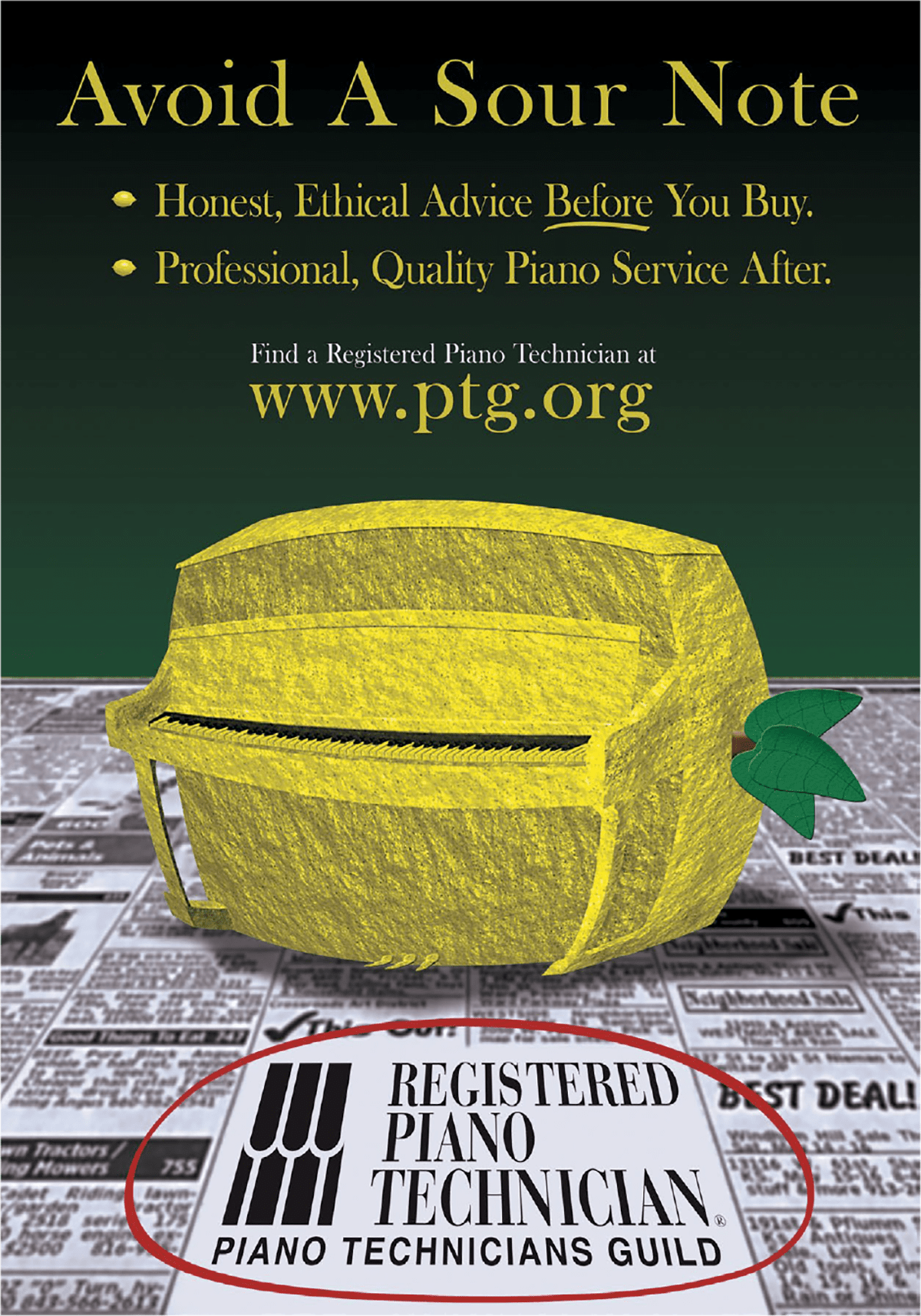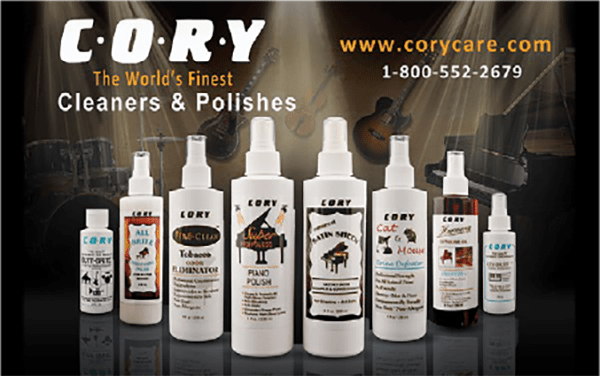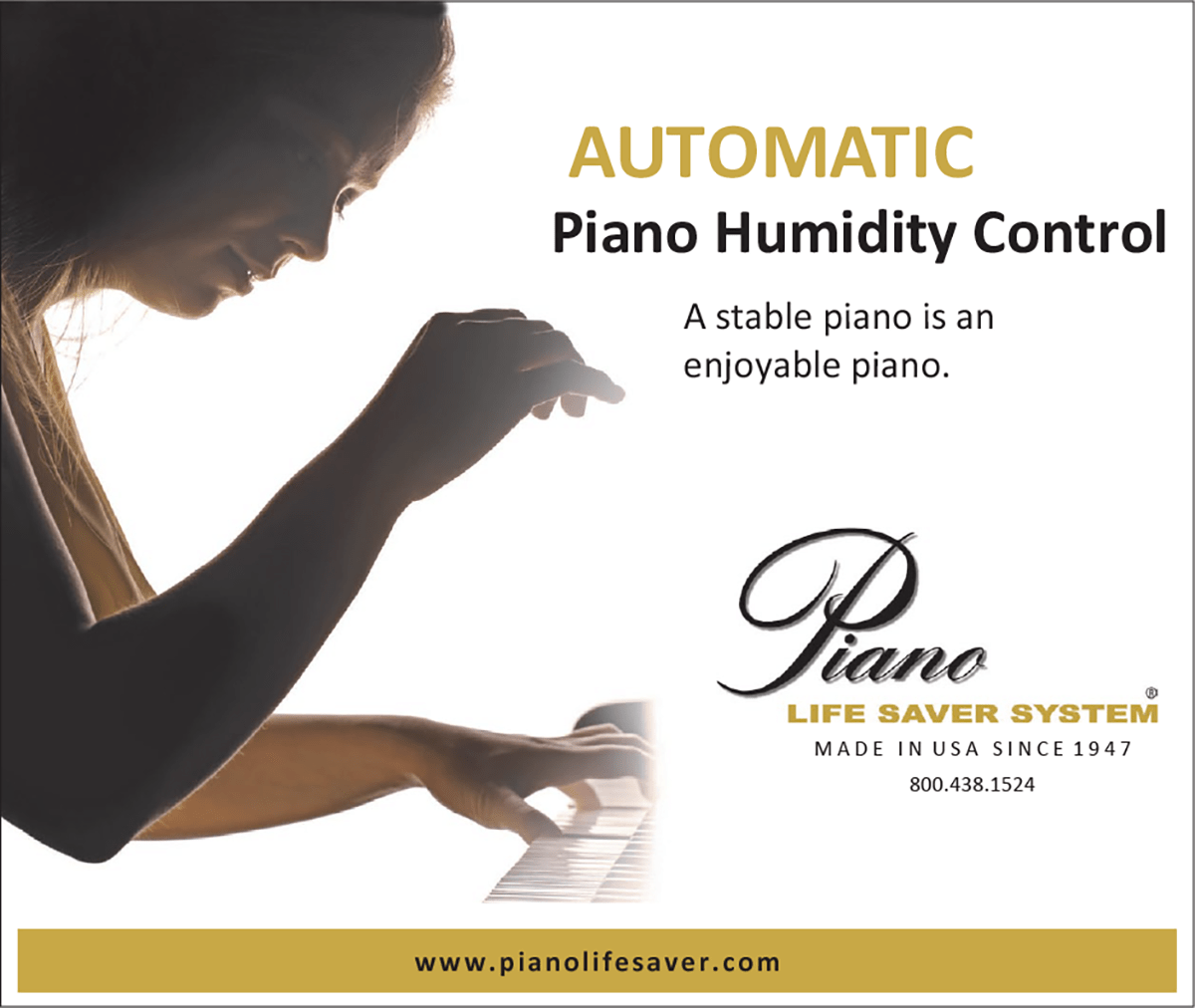If you bought the piano from a commercial seller, your first service will probably be a few weeks after delivery, by a technician associated with the seller. If you bought a used piano from a private seller and do not have a trustworthy recommendation to a technician, you can find the names of Registered Piano Technicians (RPT) in your area from the website of the Piano Technicians Guild (PTG), www.ptg.org. To become an RPT, one must pass a series of exams, assuring at least a minimum level of competence in piano servicing.

The following are the major types of service a piano needs on a regular or semi-regular basis. More information can be found in The Piano Book.
Tuning

Pianos go out of tune mostly because of seasonal changes in humidity that cause the soundboard and other parts to alternately swell and shrink. This happens regardless of whether or not the piano is played. Pianos vary in their responsiveness to fluctuations in humidity, but the variance is not always related to the quality of the instrument. People also differ in their sensitivity to tuning changes. New or newly restored pianos should be tuned three or four times the first year, until the strings are fully stretched out. After that, most pianos should be tuned between one and three times per year, depending on seasonal humidity changes, the player’s sensitivity, and the amount of use. Pianos that receive professional levels of use (teaching, performance) are typically tuned more often, and major concert instruments are tuned before each performance. A regular home piano tuning typically costs between $100 and $200. However, if the piano has not been tuned regularly, or if it has undergone a large change in pitch, additional tuning work may be required at additional cost.
Regulation
Pianos also need other kinds of service. Due to settling and compacting of numerous cloth and felt parts, as well as seasonal changes in humidity, the piano’s action (key and hammer mechanism) requires periodic adjustments to bring it back to the manufacturer’s specifications. This process is called regulation. This should especially be done during the first six months to two years of a piano’s life, depending on use. If it is not done, the piano may wear poorly for the rest of its life. After that, small amounts of regulating every few years will probably suffice for most pianos in home situations. Professional instruments need more complete service at more frequent intervals.
Voicing
Within limited parameters, the tone of a piano can be adjusted by hardening or softening the hammers, a process called voicing. Voicing is performed to compensate for the compacting and wear of hammer felt (which causes the tone to become too bright and harsh), or to accommodate the musical tastes of the player. Voicing should be done whenever the piano’s tone is no longer to your liking. However, most piano owners will find that simply tuning the piano will greatly improve the tone, and that voicing may not be needed very often.
Cleaning and Polishing
The best way to clean dust and finger marks off the piano is with a soft, clean, lintless cloth, such as cheesecloth, slightly dampened with water and wrung out. Fold the cloth into a pad and rub lightly in the direction of the grain, or in the direction in which the wood was originally polished (obvious in the case of handrubbed finishes). Where this direction is not obvious, as might be the case with high-polish polyester finishes, rub in any one direction only, using long, straight strokes. Do not rub in a circular motion, as this will eventually make the finish lose its luster. Most piano manufacturers recommend against the use of commercially available furniture polish or wax. Polish specially made for pianos is available from some manufacturers, dealers, and technicians.
To clean the keys, use the same kind of soft, clean cloth as for the finish. Dampen the cloth slightly with water or a mild white soap solution, but don’t let water run down the sides of the keys. If the keytops are made of ivory, be sure to dry them off right after cleaning — because ivory absorbs water, the keytops will curl up and fall off if water is allowed to stand on them. If the black keys are made of wood, use a separate cloth to clean them, in case any black stain comes off (not necessary for plastic keys).
Dust inevitably collects inside a piano no matter how good a housekeeper one is. A piano technician can safely vacuum up the dust or otherwise clean the interior of the piano when he or she comes to tune it.

Humidity Control
Because pianos are made primarily of wood, proper control of humidity will greatly increase both the life span of the piano and your enjoyment of it. A relative humidity of 42% is sometimes cited as ideal for a piano, but any humidity level that is relatively constant and moderate will suffice. Here are some common steps to take to protect your piano from fluctuations and extremes of humidity:
- Don’t place the piano too near radiators, heating and cooling ducts, fireplaces, direct sunlight, and open windows.
- Avoid overheating the house during cold weather.
- Use air-conditioning during hot, humid weather.
- Add humidity to the air during dry weather with either a whole-house humidifier attached to a central air system or with a room humidifier. Room humidifiers, however, have to be cleaned and refilled frequently, and some make a lot of noise. If you use a room humidifier, don’t place it too near the piano.
Instead of the above, or in addition to it, have a climate-control system installed in the piano. They make no noise, require very little maintenance, and cost $350 to $500 for a vertical piano or $400 to $600 for a grand, ordered and installed through your piano technician or piano dealer. The illustrations below of the Dampp-Chaser climate-control system show how the system’s components are discreetly hidden inside the piano. For more information about these systems, see www.pianolifesaver.com.
Another solution to the humidity-control problem is Music Sorb, a non-toxic silica gel that naturally attracts moisture from the air when humidity rises above 50%, and releases that same moisture when the humidity drops below 50%. It comes in cassettes or pouches sold through piano technicians or from the website www.musicsorbonline.com. A supply sufficient for a single piano costs about $125 and may need replacing once a year, depending on local humidity variations.
When Should I Have My Piano Tuned?
When to tune your piano depends on your local climate. You should avoid times of rapid humidity change and seek times when the humidity will be stable for a reasonable length of time. Turning the heat on in the house in the fall, and then off again in the spring, causes major indoor humidity changes, and in each case it may take several months before the piano’s soundboard fully restabilizes at the new humidity level.
In Boston, for example, the tuning cycle goes something like that shown in the graph. A piano tuned in April or May, when the heat is turned off, will probably be out of tune by late June. If it is tuned in late June or July, it may well hold its tune until October or later, depending on when the heat is turned on for the winter. If the piano is tuned right after the heat is turned on, however, say in October or November, it will almost certainly be out of tune by Christmas. But if you wait until after the holidays (and, of course, everyone wants it tuned for the holidays), it will probably hold pretty well until April or even May. In my experience, most problems with pianos in good condition that “don’t hold their tune” are caused by poor timing of the tuning with the seasonal changes.
Note that those who live in a climate like Boston’s and have their piano tuned twice a year will probably also notice two times during the year when the piano sounds out of tune but when, for the above reason, it should probably not be tuned. The only remedies for this dilemma are to have the piano tuned more frequently, or to more closely control the humidity.